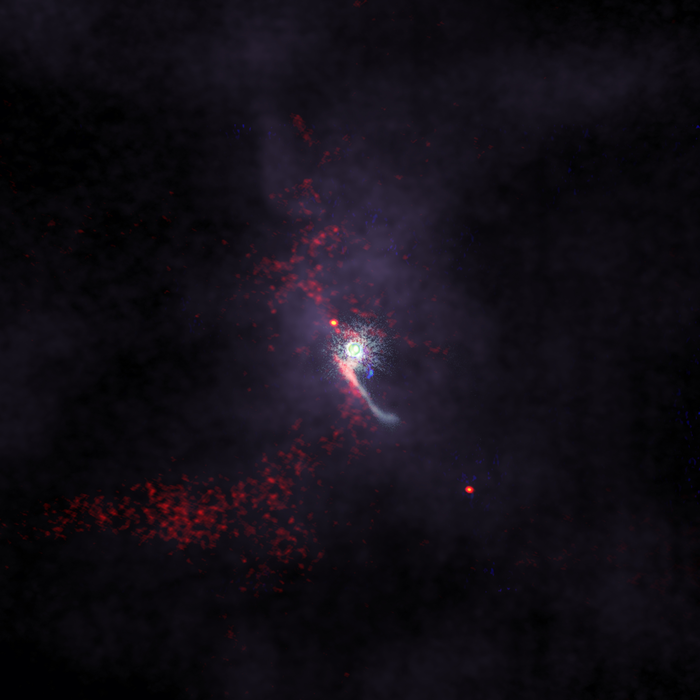Scientists spot ‘intruder’ flying through space and disturbing distant star

Scientists have spotted an “intruder” disturbing a forming star in a distant star system.
Researchers watched as the object – which was not a part of the system – came close enough to the binary protostar that it interacted with the environment around it. As it flew past, it left a chaotic stream of dust and gas in its wake.
Such events have been seen before in computer simulations. But they have remained largely theoretical.
Now scientists say they have directly observed such a phenomenon, using the Atacama Large Millimeter/submillimeter Array (ALMA) and the Karl G. Jansky Very Large Array (VLA) telescopes.
“Observational evidence of flyby events is difficult to obtain because these events happen fast and it is difficult to capture them in action. What we have done with our ALMA Band 6 and VLA observations is equivalent to capturing lightning striking a tree,” said Ruobing Dong, an astronomer at the University of Victoria in Canada and the principal investigator on the new study, in a statement.
“This discovery shows that close encounters between young stars harboring disks do happen in real life, and they are not just theoretical situations seen in computer simulations. Prior observational studies had seen flybys, but hadn’t been able to collect the comprehensive evidence we were able to obtain of the event at Z CMa.”
An article describing the findings, ‘A likely flyby of binary protostar Z CMa caught in action’, is published in Nature Astronomy today.
Usually, when such disturbances happen, they don’t happen by intruders, but by stars that have grown up together close next to each other. Stars tend to form with other stars, and those siblings – sometimes as many as four of them – are pulled in towards each other and cause what scientists refer to as “perturbations”.
But researchers watching the star system known as Z CMa noticed that the structure of the streams that were left behind looked unusual in this case.
“When a stellar encounter occurs, it causes changes in disk morphology—spirals, warps, shadows, etc.—that could be considered as flyby fingerprints. In this case, by looking very carefully at Z CMa’s disk, we revealed the presence of several flyby fingerprints,” said Nicolás Cuello, an astrophysicist and Marie Curie Fellow at Université Grenoble Alpes in France and a co-author on the paper.
Scientists have never known quite how such interactions might change the future of the star systems they happen in, such as Z CMa, and any planets that are born there. Now they might be able to use the discovery to find out.
“Studying these types of events gives a window into the past, including what might have happened in the early development of our own Solar System, critical evidence of which is long since gone,” said Dong.
“Watching these events take place in a newly forming star system provides us with the information needed to say, ‘Ah-ha! This is what may have happened to our own Solar System long ago.’
“Right now, VLA and ALMA have given us the first evidence to solve this mystery, and the next generations of these technologies will open windows on the Universe that we have yet only dreamed of.”
Join our commenting forum
Join thought-provoking conversations, follow other Independent readers and see their replies
Comments
Bookmark popover
Removed from bookmarks